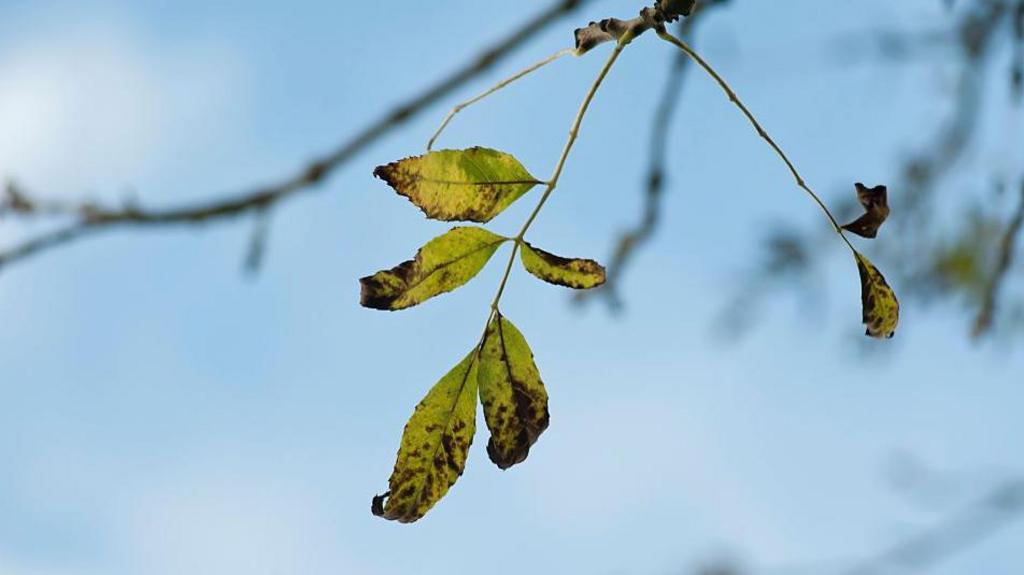New scientific evidence indicates that ash trees are demonstrating resilience against ash dieback, a disease that has devastated the British countryside.
Upon its arrival in 2012, predictions estimated that up to 85% of ash trees could be lost to the disease.
However, recent findings reveal that ash woodlands are naturally developing enhanced resistance to the fungal infection.
This discovery offers renewed hope for the survival of these cherished trees in the British landscape.
“It is hope born out of the death of a lot of trees,” stated Prof Richard Buggs of the Royal Botanic Gardens Kew, and Queen Mary University of London.
He added that supplementary interventions are necessary to aid ash trees, including protection from grazing deer and breeding the most resilient trees for future planting initiatives.
“We have fresh motivation to look after our ash populations, to protect them from other problems like deer browsing, and to let nature take its course and evolve trees with more resistance,” he told BBC News.
Originating in Asia, the ash dieback fungus was introduced to Europe approximately 30 years ago.
A study of ash trees in a Surrey woodland has identified subtle genetic shifts over time, which are expected to bolster new saplings’ defense against the disease.
The trees are evolving greater resistance than their predecessors, showcasing Charles Darwin’s theory of natural selection in action.
Richard Nichols, professor of evolutionary genetics at Queen Mary University of London, noted that this “tragedy for the trees has been a revelation for scientists: allowing us to show that thousands of genes are contributing to the ash trees’ fightback against the fungus”.
Rebecca Gosling of the Woodland Trust emphasized that ash dieback exemplifies the potentially devastating impact of introduced pathogens on trees and the species that depend on them.
“The findings highlight how vital it is to support natural regeneration in woodlands, furthering our understanding of how to best manage our ash woodlands,” she said.
Scientists had feared that ash trees might face a similar fate to elms, which have been nearly eradicated by Dutch elm disease.
The loss of this native tree would have a significant impact on biodiversity and transform the landscape.
Since its emergence in Britain in 2012, ash dieback has spread throughout the British Isles, causing extensive damage to woodlands.
Ash fungus genetic code unravelled
Alarm call as world’s trees slide towards extinction
Ash tree set for extinction in Europe
Signs of ash dieback include withered and blighted leaves.
The fungal disease often leads to the eventual death of the tree.
The research is published in the journal, Science.
New reports are set to show pollution from farming and sewage is affecting protected areas of the sea.
It will join Poland, the Netherlands and Finland to pilot a farming method called “paludiculture”.
Natural Resources Wales said it was the worst case of illegal tree felling it had seen in 30 years.
Reptiles living at St Aubin’s fort in Jersey are thought to have disappeared
The first film, released on Monday, celebrates the landscape and wildlife in Kynance.

